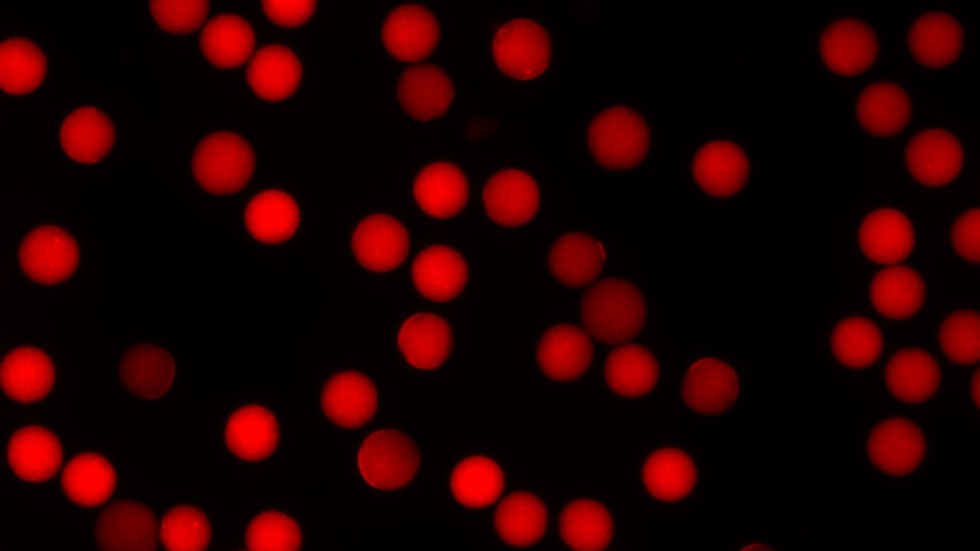Hyper-Compliant Microparticles
To improve our fundamental and quantitative understanding of tissue assembly, the Darling lab is using their hypercompliant microparticles to study how cellular-level forces change as human adult stem cells undergo mesenchymal condensation and maturation in 3D microtissues.
Hyper-Compliant Microparticles
To improve our fundamental and quantitative understanding of tissue assembly, the Darling lab is using their hypercompliant microparticles to study how cellular-level forces change as human adult stem cells undergo mesenchymal condensation and maturation in 3D microtissues.
Hypercompliant Microparticles as Mechanical Sensors
- The Darling Lab has developed small spherical microparticles the size of a single cell that act as small mechanical sensors. These synthetic microparticles are very soft (hyper-compliant).
- When added to a living 3D microtissue, the microparticles become embedded in the microtissue and the cells exert small forces that cause deformations to the size and shape of the microparticles.
- We have utilized the Opera Phenix high-content imaging system to acquire 3D images of the deformed microparticles embedded in the microtissue.
- Because the stiffness of the hypercompliant microparticles are well defined, we can analyze the images of the deformed microparticles and calculate the magnitude of the small forces that the cells are exerting.
- In addition to the size of the forces, we can calculate the direction of these cell-generated forces. In this way, we can quantitatively assess the local mechanical environments in both simple and complex systems at the cellular level without disrupting the larger behavior of the microtissue.
- Cell forces are critical for many biological processes including early development and tissue differentiation and can be altered in certain pathological environments.
- To improve our fundamental and quantitative understanding of tissue assembly, we are using their hypercompliant microparticles to study how cellular-level forces change as human adult stem cells undergo mesenchymal condensation and maturation in 3D microtissues.
Time lapse video of cells aggregating to form a 3D microtissue. Included in the microtissue is a single red fluorescent hypercompliant microparticle that gets squeezed and deformed as the cells exert forces on the microparticle.

Image of small fluorescent hypercompliant (soft) microparticles, each about the size of a single living human cell. When cells squeeze and deform them, the microparticles become sensors that are used to calculate the forces exerted by cells.
Learn More
Labriola, NR., Mathiowitz, E, Darling, E M. (2016). Fabricating polyacrylamide microbeads by inverse emulsification to mimic the size and elasticity of living cells. Biomaterials science, 5(1), 41-45. PMC5201106
Labriola, N.R., Sadick, J.S., Morgan, J.R., Mathiowitz, E., Darling, E.M. (2018). Cell mimicking microparticles influence the organization, growth, and mechanophenotype of stem cell spheroids. Annals of Biomedical Engineering, 46(8), 1146-1159. PMC6039261
Labriola, N.R., Azagury, A., Gutierrez, R., Mathiowitz, E., Darling, E.M. (2018). Concise review: Fabrication, customization, and application of cell mimicking microparticles in stem cell science. Stem Cell Translational Medicine, 7(2), 232-240. PMC5788880
Shah, M.K., Leary, E.A., Darling, E.M. (2019). Integration of hyper-compliant microparticles into a 3D melanoma tumor model. Journal of Biomechanics, 82, 46-53. PMC6310620.
Investigators
-

Eric Darling, PhD
Associate Professor of Medical Science, Engineering, and Orthopaedics, Department of Pathology and Laboratory Medicine